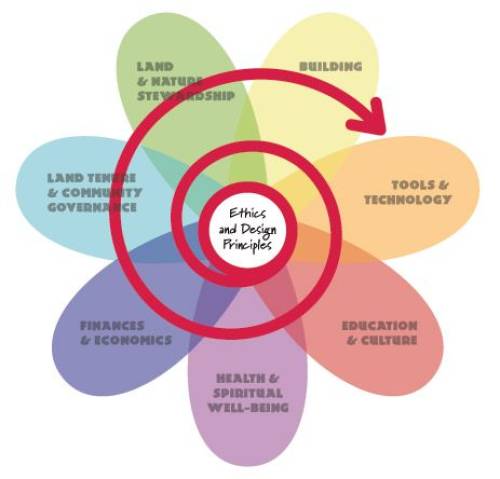This is an old revision of the document!
What is Permaculture?
Permaculture is a design system for creating sustainable human environments. - Bill Mollison
It is the use of ecology as the basis for designing integrated systems of food production, housing, appropriate technology, and community development. Permaculture is built upon an ethic of caring for the earth and interacting with the environment in mutually beneficial ways. - The Permaculture Activist (Autumn 1989)1)
It is a movement which strives for the harmonious integration of human dwellings, microclimate, annual and perennial plants, animals, soils, and water into stable, productive communities.
The focus is not on these elements themselves, but rather on the relationships created among them by the way we place them in the landscape. This synergy is further enhanced by mimicking patterns found in nature.
Emphasis is placed on multi-use plants 2), cultural practices such as sheet mulching 3) and trellising 4), and the integration of animals to recycle nutrients and graze weeds. However, permaculture entails much more than just food production. Energy-efficient buildings, waste water treatment, recycling, and land stewardship 5) in general are other important components of permaculture.
Permaculture has expanded its purview to include economic and social structures that support the evolution and development of more permanent communities, such as co-housing 6) projects and eco-villages 7). “Integrated farming” 8) and “ecological engineering” are terms sometimes used to describe permaculture, with “cultivated ecology” perhaps coming the closest.
More information:
Listen to David Holmgren talk about the permaculture flower (mp3 – 1.20MB).
 9)
9)